Winging it
Second leg to Bahia Santa Maria
When we woke up, and looked around the anchorage, there weren’t many boats left. We had planned a nine AM departure, and were lagging a bit behind our intended schedule. Most of the fleet was gone from Bahia de Tortuga by 0930 as we finally raised sail. We took our time knowing that we would catch up. The wind was forecast to be much lighter than the first leg and we would be motoring until the Pooh Bah called the official start.
The wind was low but the waves were still high, cresting around five feet and creating some roll. At first we tried putting up our spinnaker but the sail wouldn’t stay afloat. It eventually became more fuss than we wanted. So we took it down about an hour later and started motoring. We motored most of the day until the Pooh Bah (leader of the fleet) came on the net and told us the rally would officially start because the wind picked up enough to sail again.
We pointed Salacia further down wind and decided to try wing-on-wing - our jib and the main open on opposite sides - it covers a much larger surface area in front of the boat so the wind can fill both sails at once. The wind can move us faster in this configuration, especially with it being on the lighter side. We used a whisker pole to keep the jib open and ready to pull. We thought maybe this would keep us going for a while but we weren’t sure.
Sailing straight downwind can be challenging. The main seemed to flop around and make a lot of noise. We didn’t have a preventer for it which would keep it from accidentally jibing. The reason we don’t have one is that it could cause bigger problems if the wind all of a sudden shifts in a different direction. We wouldn’t want to jibe but we also wouldn’t want the main to get back winded from too much pressure in the other direction.
About an hour and 15 minutes later, we dropped the whisker pole and pulled in our jib. We pointed Salacia up wind a bit more which helped us to move faster and reefed our main in case the wind picked up a lot.
We were able to sail until about four in the morning under main alone when the waves started banging the boom against the main sheet as the dying wind didn’t have enough force to hold out the sail against the rolling motion of the boat. We turned on the motor because we wanted to make sure we got to the anchorage before dark.
Unfortunately, that didn’t happen. We had to approach a completely unknown anchorage in the dark with other boats trying to do the same. It was not easy. There was no moon, and an overcast sky, but at least there weren’t any distracting lights on shore. All of us had our eyes on the instruments with radar and AIS, or over the dodger and out into the darkness looking for signs of other boats. We looked for the red or green running lights on top of the mast or the white steaming lights in the middle of the mast. We also looked for white stern lights.
We got close to a couple of boats. In fact we were coming closer to the anchorage between two of them and we knew we would have to make a hard left towards the anchorage. One boat crossed our bow and we crossed another boat’s stern. It was very exciting and a little stressful to maneuver our way around in complete darkness, not knowing exactly where we were except from what the instruments and charts were telling us. The boats were jockeying for position just like horses in a race. We weren’t anxious to get to the finish line! It’s so much easier to follow another boat into an unknown anchorage at night. As long as they know where they’re going, and draw at least as much water as you do!
When we got into the anchorage and we could see where the other boats were anchored, we slowly crept in close enough to another boat to figure out where we were going to set our anchor. We found a spot big enough for our boat to swing and set our anchor. It felt like a huge relief to get the hook down so we could all begin to relax and rest our eyes and nervous systems. We pulled together dinner after sharing some celebratory libations! We made toasts to another successful passage!
The next day someone on the net offered up some fish that they caught on the passage. We were the first of many on the radio to say yes please! They said to come over to their boat for it. We realized we didn’t have our dinghy out and there weren’t any pangas running yet. So we let it go. In about an hour there was a dinghy approaching our boat with two men in it. They were bringing fish! They wanted to clear their freezer so they could keep fishing. We invited them in for a beer and learned that one of them was someone Peter and I met in Monterey at the Monterey Yacht Club! He recognized our boat name. The fish was yellow tail and it was amazingly tasty! We grilled it almost immediately.
The next day the fleet celebrated together with another beach party. This time with a band and dancing. It was good to meet more cruisers over some beers or on the dance floor.
We also enjoyed stretching our legs with a walk on the land surrounded by such natural beauty!
We left the party before the sunset to have a quiet night of rest because it was going to be an early wake up the next morning! The departure time was scheduled for 0700! This would be our last leg of the voyage from San Diego to Cabo San Lucas. It was going to be another night sail but we expected to get there the following day before dark. Given that Cabo was a much busier port, we certainly hoped so!
Hello everyone!
We were moving to different anchorages where we’ve had little to no cell coverage. We got to La Paz and were able to celebrate Thanksgiving there with other cruisers. We took care of some much needed boat chores in La Paz and decompressed from the long journey. We’ve also had an obstacle to deal with over the past two weeks. More on that later!
We will be heading further north into the Sea of Cortez in the next couple of weeks to meet up up with some friends from San Francisco in Loreto and Bahia Conception to celebrate the holidays.
We’ll get caught up on our posts soon. Thanks for reading along. Cheers everyone!




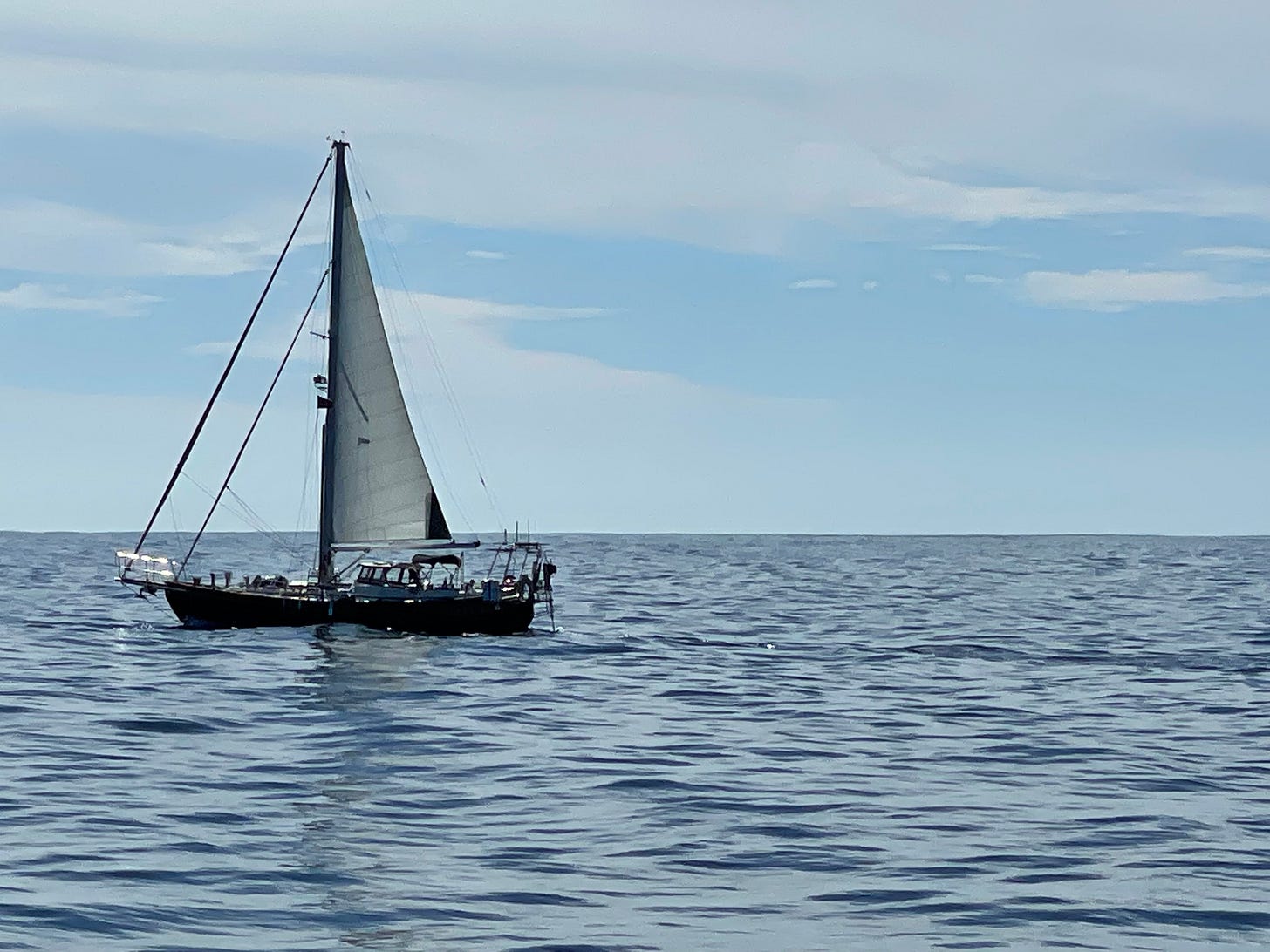




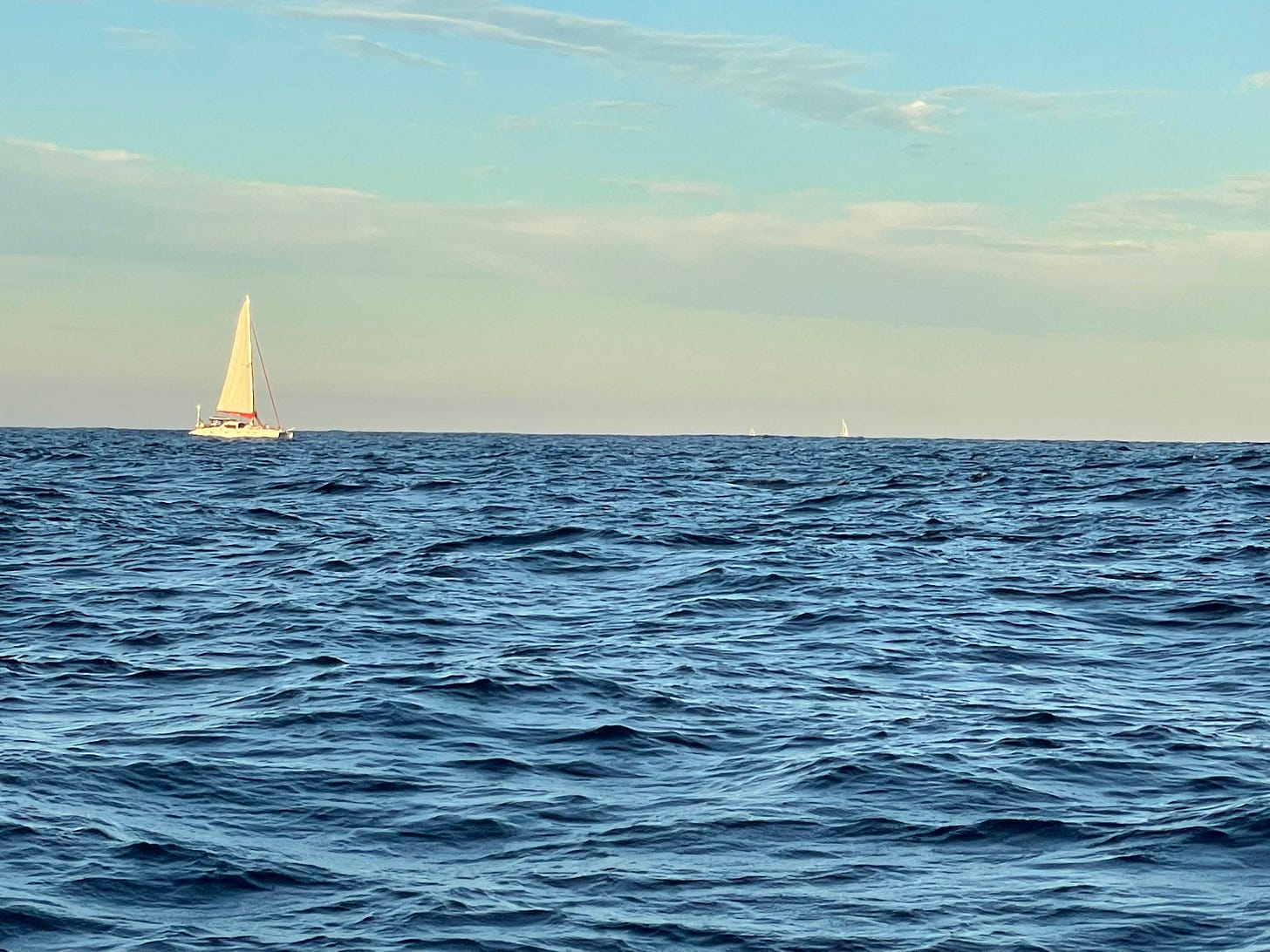

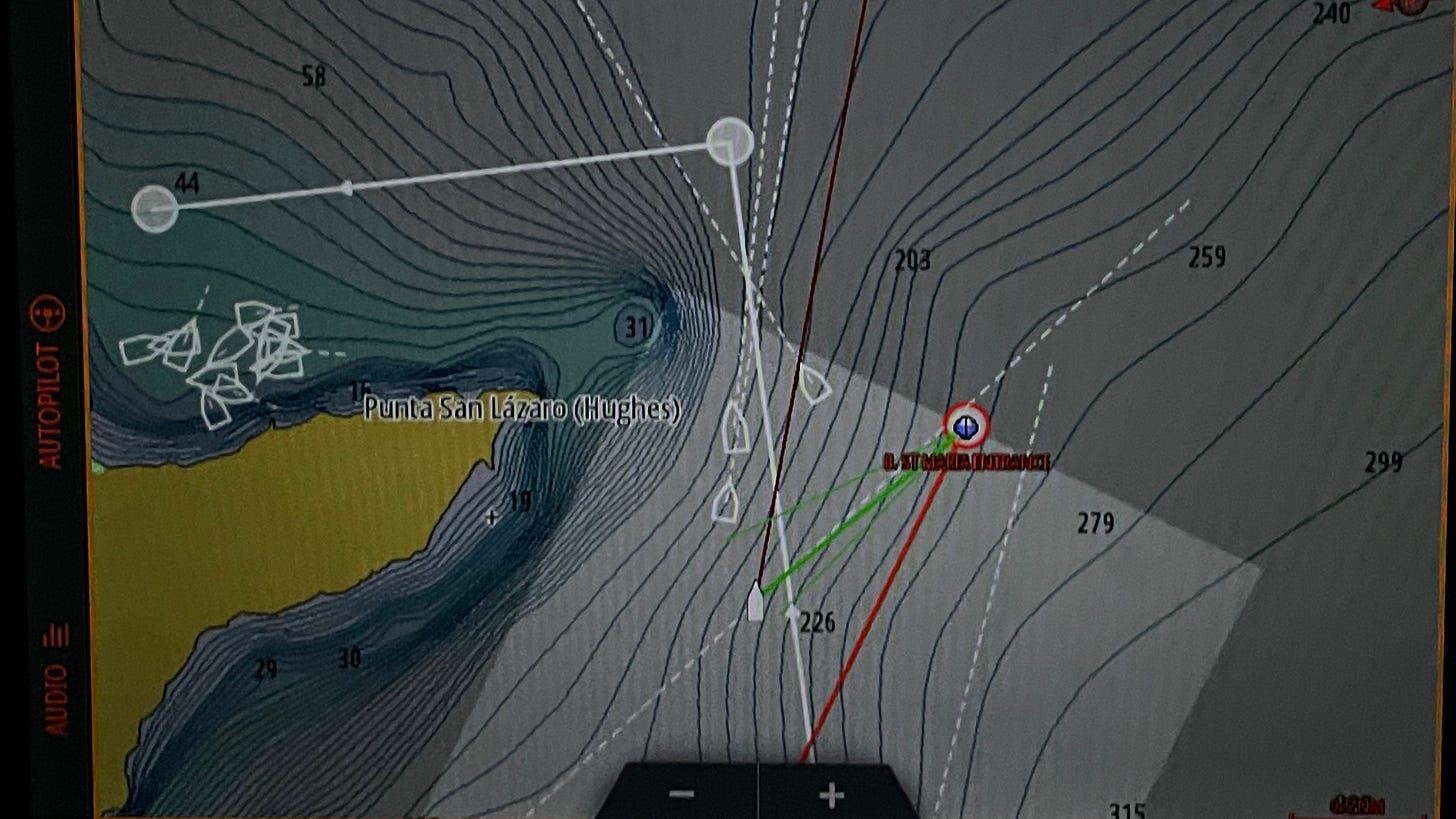
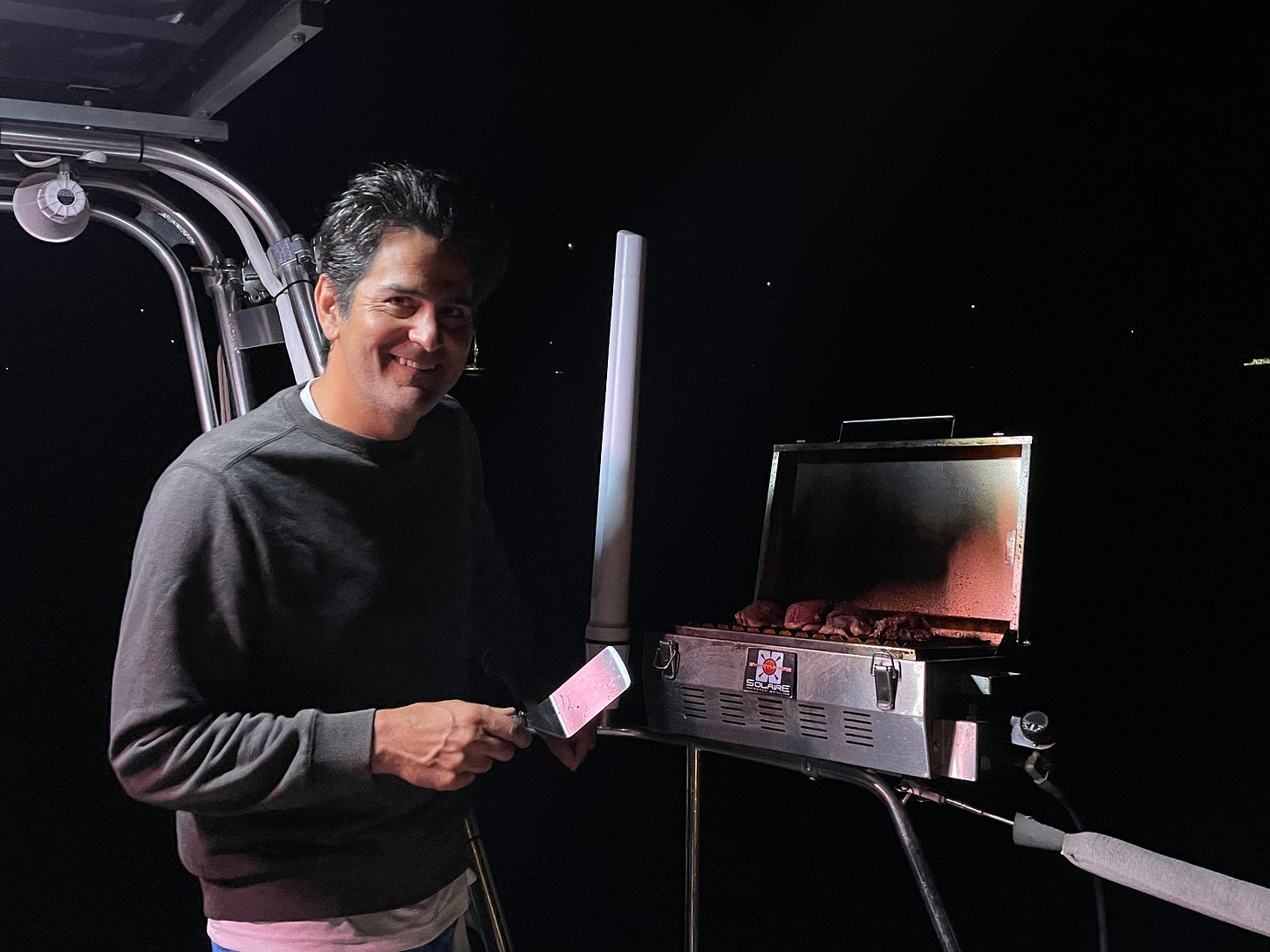
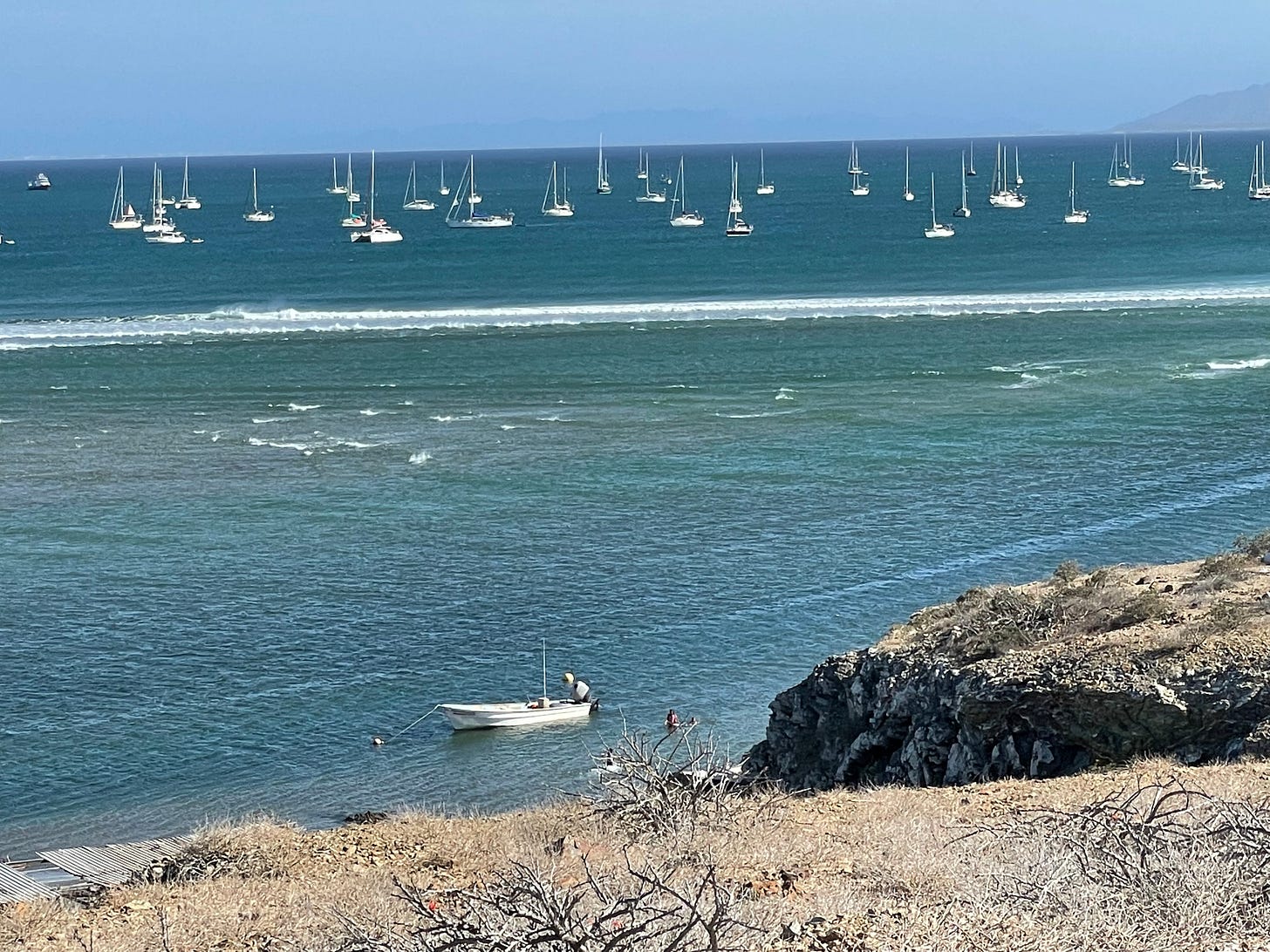




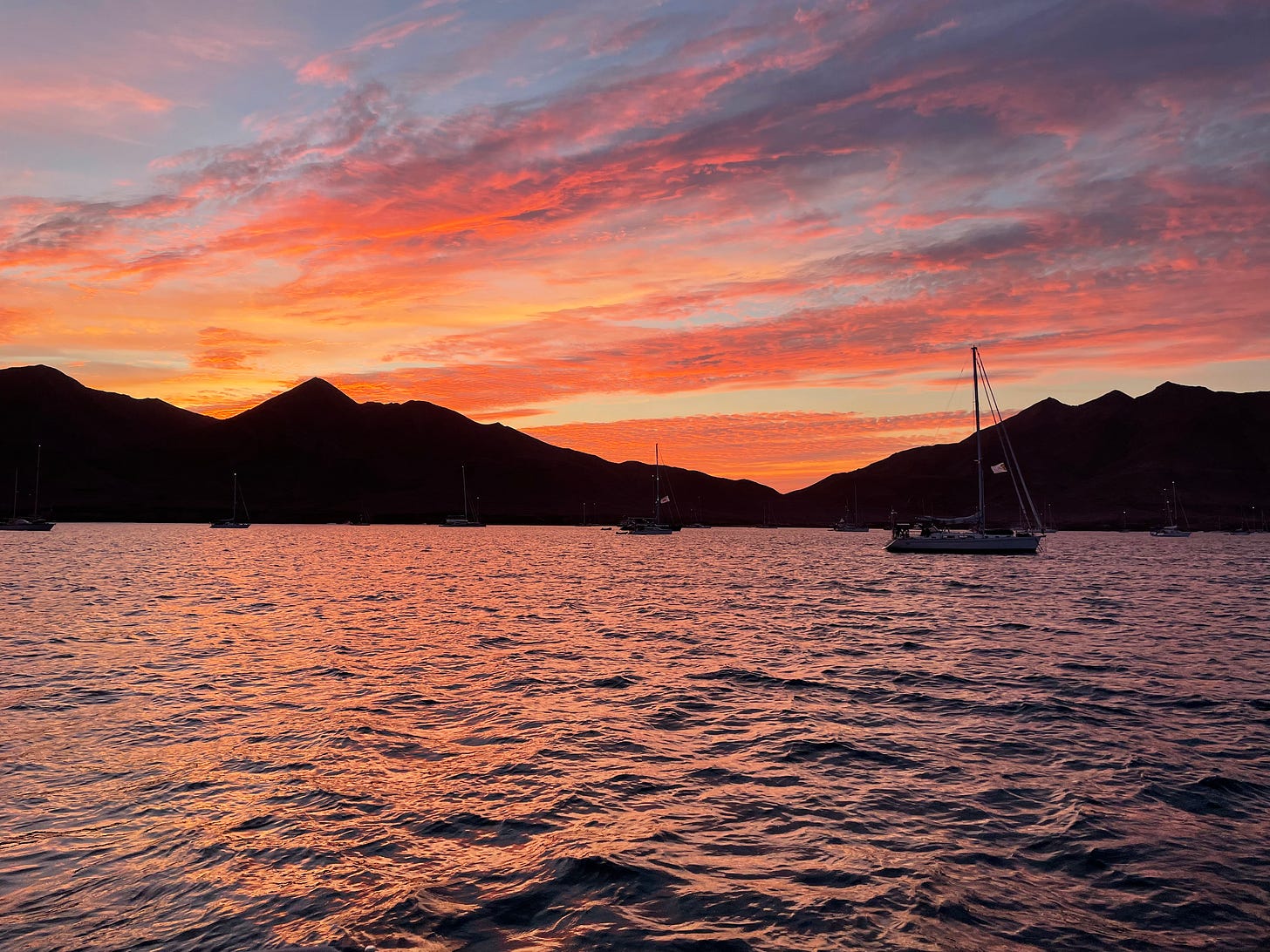
Now that's quite a fleet, pirates beware.